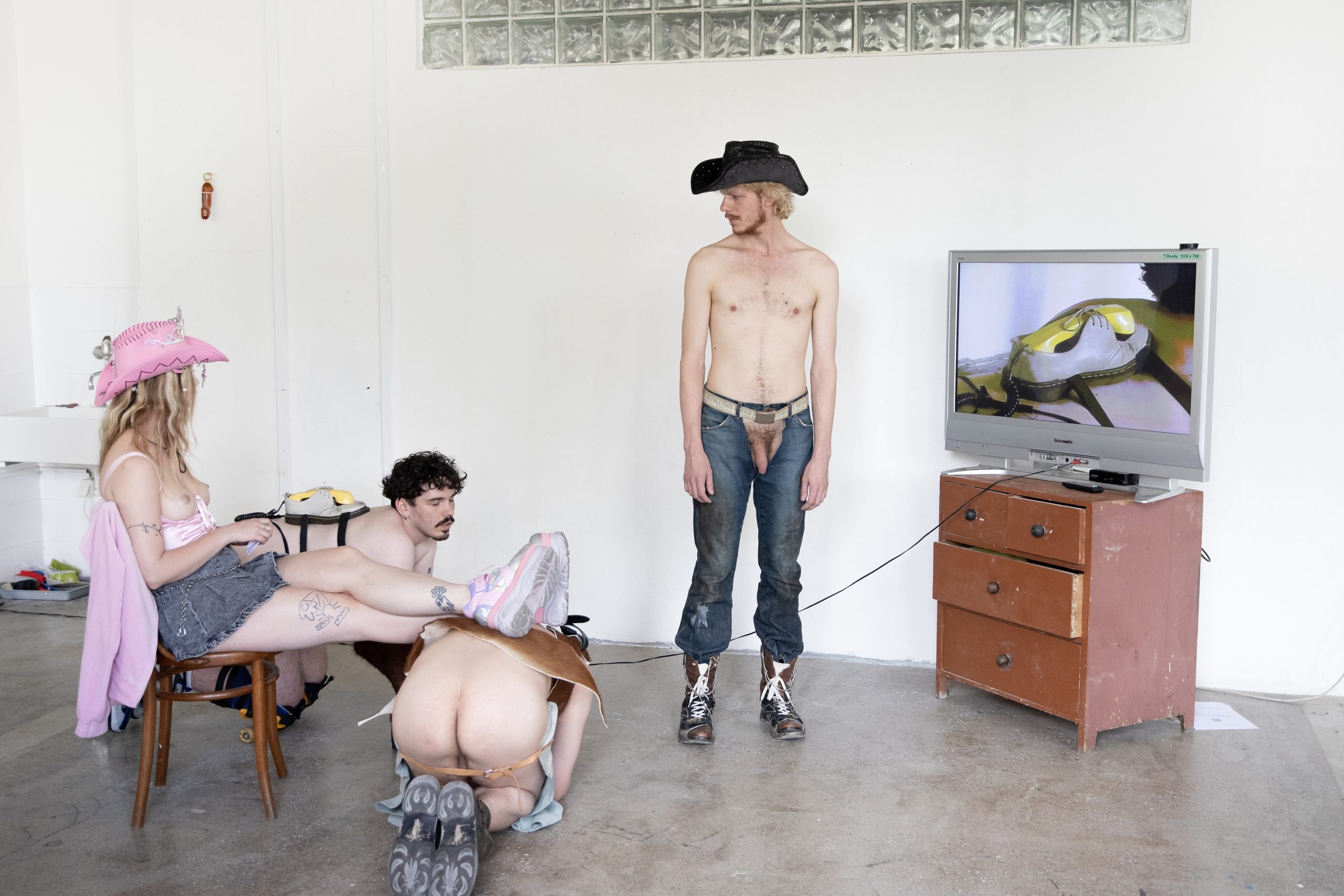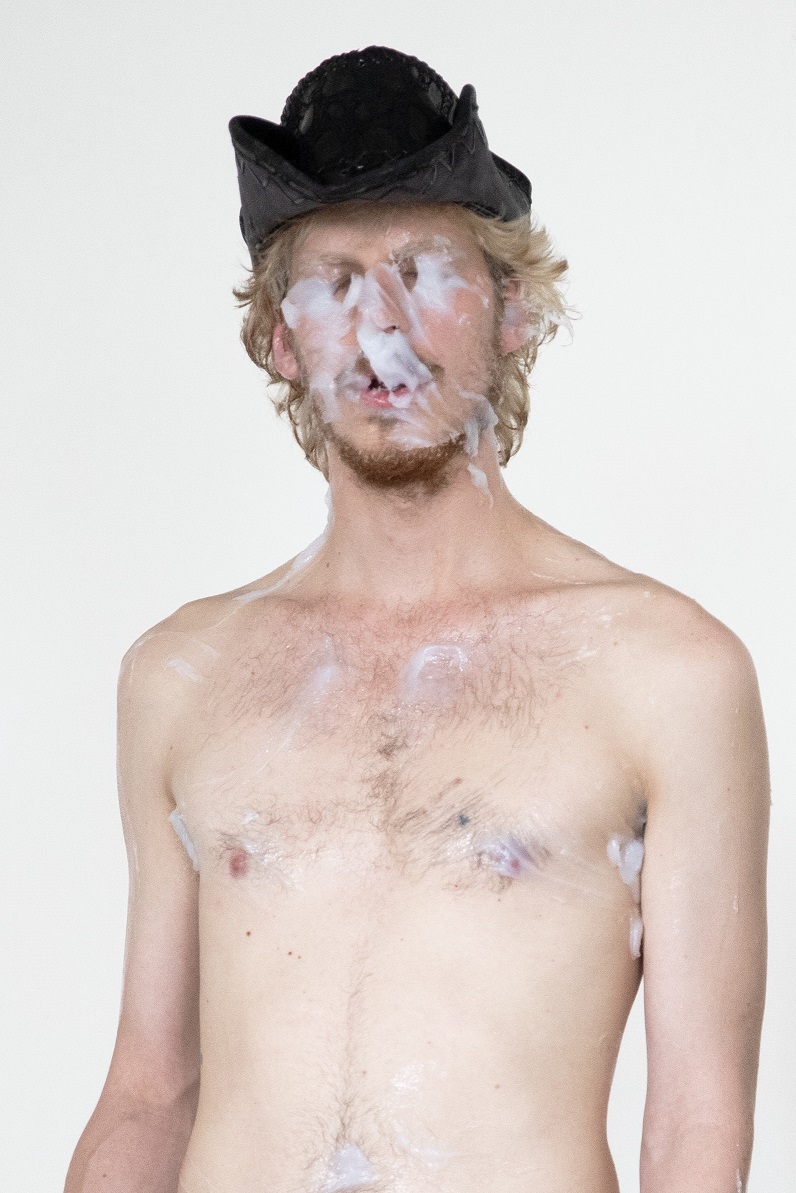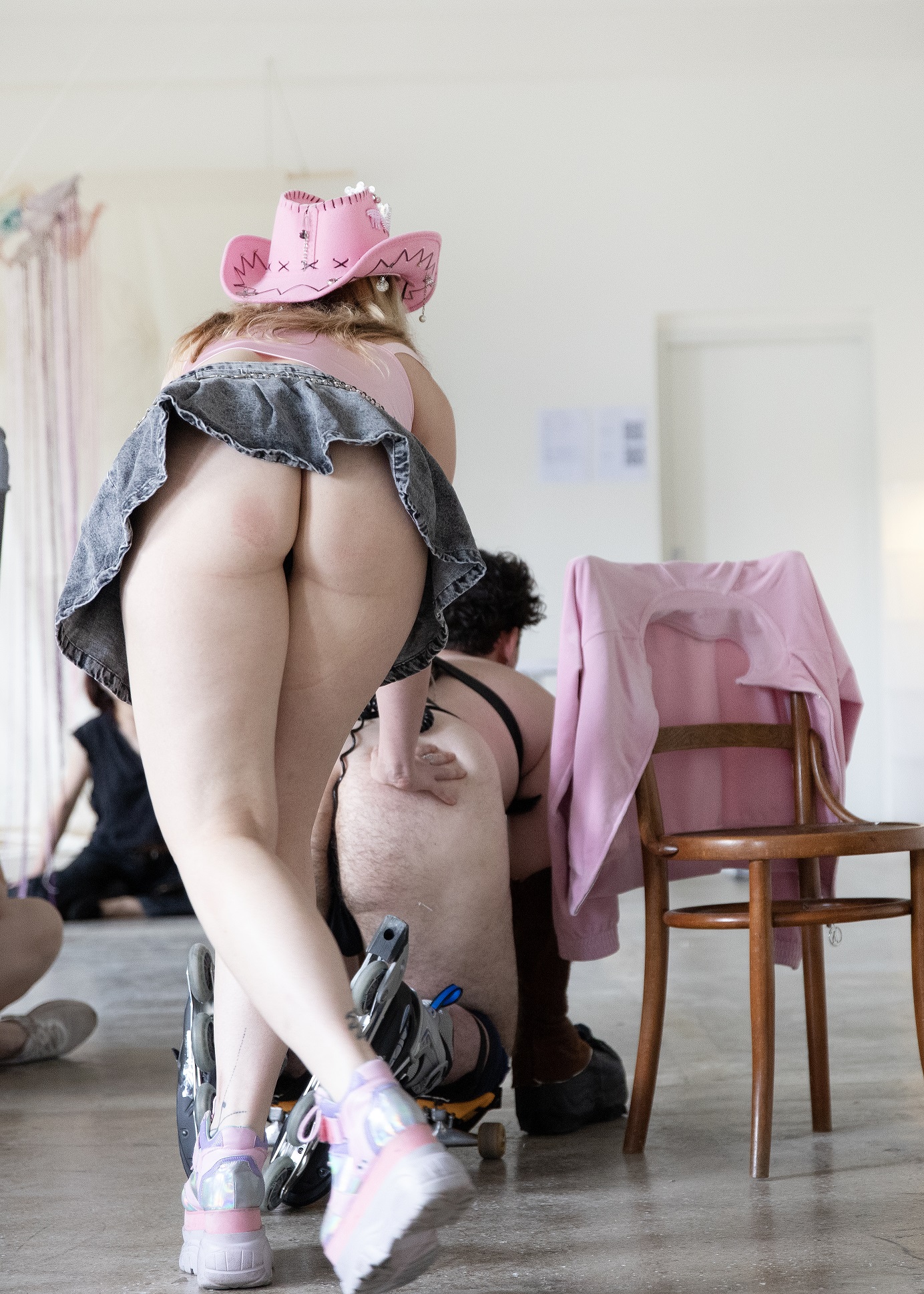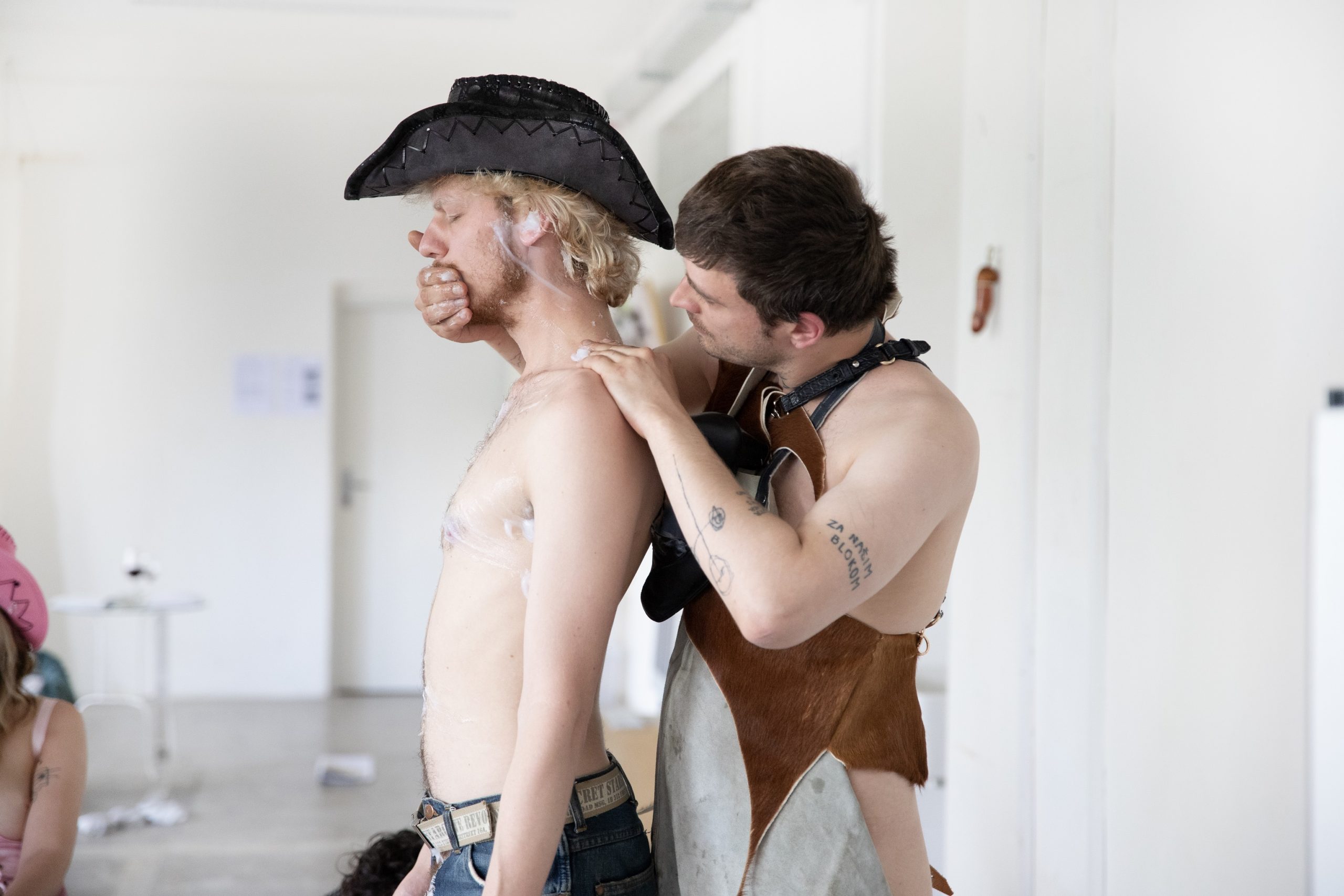Adam Michálek
No more binary signals
The motif of Uncle Willy “coming of age” continues its ritual journey. Willy, the cowboy with anxiety, has finally found himself in an interior, symbolizing also an inner peace. From a potential future, he encounters entities, transanimals, merging in a final ritual. At the same time, he finds himself unable to fully sympathize with the new context; he experiences an existential crisis and decides to “come out” about his gender and future. Michálek himself comes from a position outside of the societal acceptance. The need to change the transanimal (transhuman) structure, the difficulty of which lies mainly in the view of heteronormative society on gender, is also a critique of the proliferation of technology. Binarity, seen as in technology as well as gender, plays a role of utmost importance. Here again, Michálek upcycled shoes and garments for all the transanimal and transhuman characters of his potential evolution line.



